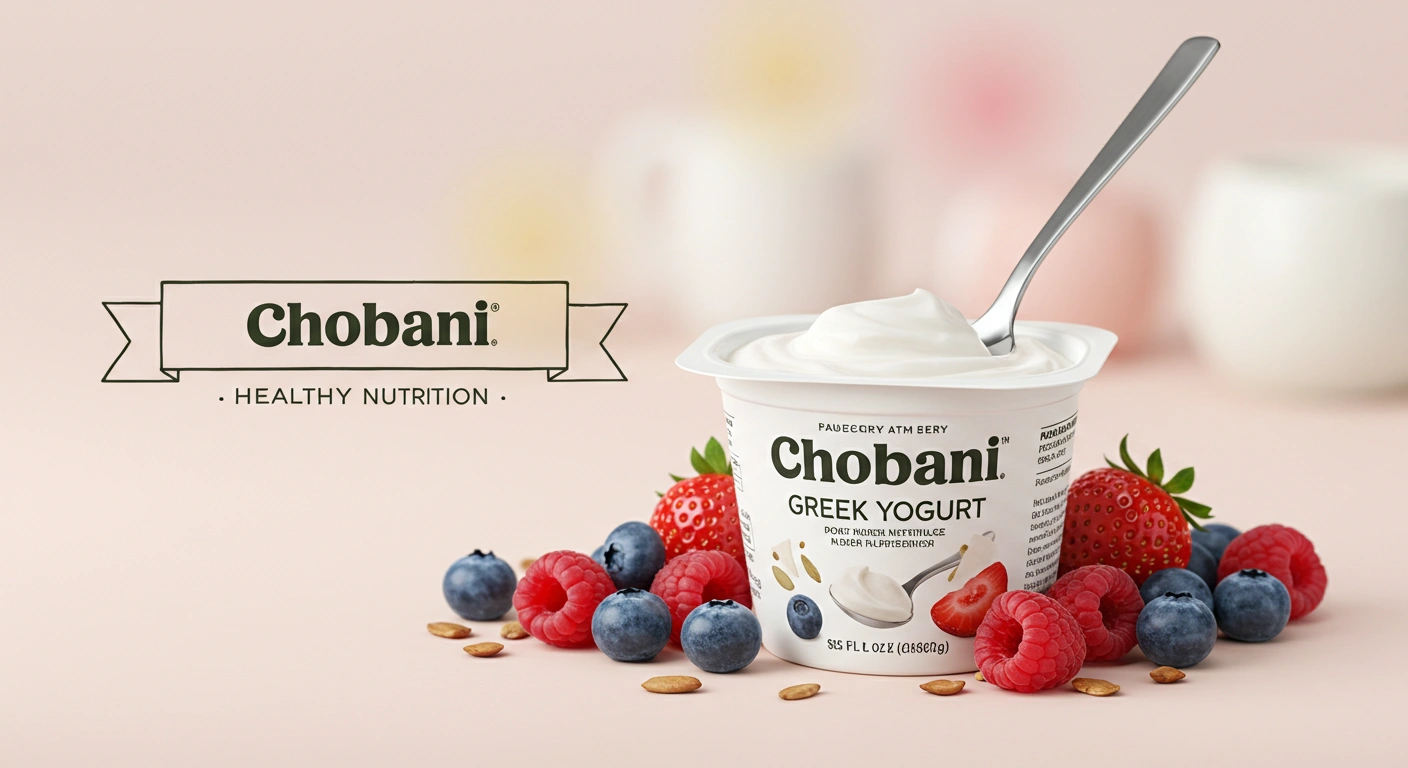If you’re wondering “Is Chobani Greek Yogurt healthy” you’re not alone. Yogurt has its fans, its critics, and a lot of products packed onto the shelves.
What Is Chobani Greek Yogurt?
Chobani is a brand known for its strained (Greek-style) yogurt. Straining removes whey (the liquid part), which makes the yogurt thicker, richer, and higher in protein. Chobani offers many varieties non-fat, low fat, whole milk, flavored, plain, “less sugar,” and even “zero sugar” options.
Greek yogurt overall tends to have more protein and less sugar (if unflavored) than regular yogurt. Chobani is part of this. Also, some of its newer lines include added probiotics/lactase or reduced sugar. (We’ll get into that.)
Nutrition Breakdown: What’s Inside
Here’s what to look at when judging “healthy”:
- Protein: helps with fullness, muscle repair.
- Sugar: natural (lactose) vs. added.
- Fat: whole vs non-fat, saturated vs unsaturated.
- Calcium and other minerals: bones, metabolism, etc.
- Live cultures / probiotics: gut health.
- Lactose content & digestibility: important for sensitive folks.
Chobani Greek Yogurt
High Protein
Many Chobani variants give you a good dose of protein. For example, their “Chobani Protein” line offers 20 grams of protein per serving with 0 grams of added sugar. That’s significantly more than their standard flavored varieties.
High protein helps you stay full longer. If you’re using yogurt as part of breakfast, post-workout snack, or to replace less nutrient dense snacks, that protein is a big plus.
Live Cultures and Lactose Considerations
Greek yogurt includes live and active cultures (good bacteria) that help with digestion. In Chobani’s Protein line, they even add lactase, which is an enzyme that helps break down lactose. That helps people who are lactose intolerant.
Lower Sugar Variants
Plain Chobani Greek yogurt has mostly natural lactose sugars, not a lot of added sugar. They also have “Less Sugar,” “Zero Sugar,” and flavored options that try to cut added sugar or use alternative sweeteners. These are better choices for people watching their sugar intake.
Nutrients Beyond Protein
Chobani Greek yogurt offers calcium and other minerals, as well as B vitamins, which are good for bones, teeth, and cellular function. Also, fat‐free or low‐fat versions reduce saturated fat intake. While whole milk versions can be richer and more satisfying, they also include more saturated fat. Balance is key.
What To Be Careful Of (Cons / Caveats)
Added Sugar in Flavored Versions
Some flavored Chobani yogurts (especially Chobani Flip or fruit flavored) include a fair amount of added sugar. That can diminish the health benefits, especially if you’re consuming large servings or multiple flavored snacks.
Even Chobani’s “Less Sugar” line still has some sugar (though less than the fully sweetened ones). It’s wise to check the nutrition label.
Calories / Portion Size
Because Greek yogurt is thicker and more filling, people may assume they can eat more with no consequence. But flavored or “add-in” versions often have extra calories from mix-ins (nuts, chocolate, fruit purees). Always check serving size.
Fat Content (Saturated Fat)
Whole milk versions are richer, and richer in saturated fat. If you have health concerns (e.g: heart disease risk), you may want to limit saturated fat or choose low-fat / non-fat versions.
Ingredients & Additives
Some add-ins or flavored versions include natural flavors, stabilizers (gums), sweeteners, and sometimes oils. While not always harmful, these ingredients can reduce the “clean” profile of the yogurt. If you’re trying to eat as “whole” foods as possible, plain or simpler flavor options are better.
Quick Overview Table:
| Feature | Where Chobani Excels | Where to Be Cautious |
|---|---|---|
| Protein (plain / protein line) | High, up to ~20g per serving in protein lines; more than many non-Greek yogurts | Flavored lines often have less protein or more filler |
| Added Sugar | Plain & “zero/less sugar” lines have minimal added sugar | Flavored and “Flip” type products have more sugar & mix-ins |
| Fat / Saturated Fat | You can choose non-fat / low-fat versions; whole milk gives richer taste | Whole milk versions have saturated fat; flavored version fats from add-ins (nuts, chocolate) |
| Digestibility (lactose & cultures) | Lactase in some lines; live cultures help with digestion | Some may still bother very lactose sensitive people; fruit purees and sugar complicate digestion |
| Ingredient Simplicity | Plain lines are simple: milk, cultures, maybe cream | More complex in flavored / add-in / dessert lines: stabilizers, flavorings, oils |
| Variety & Availability | Lots of options nearly everyone sells Chobani; frequently on sale | Price for premium lines or “protein” versions tends to be higher per gram |
| Environmental / Packaging Impact | Bulk tubs more efficient; brand has made public statements about sourcing | Single serve cups = more plastic; transport costs not all live cultures survive shipping well |
How to Choose the Healthiest Option if You Buy Chobani
Here are practical tips to help you pick smartly (without feeling deprived):
- Read the label: check added sugar (if any), protein grams, serving size.
- Prefer plain or low-sugar versions; if you want flavor, add fruit or natural flavoring.
- Choose non-fat or low-fat if saturated fat is a concern. If you want richness and don’t have risk factors, whole milk is fine in moderation.
- Look for live and active cultures; if lactose sensitive, see if there’s lactase added.
- Watch portion size: single-serve cups are easy, but tubs might lead to overeating.
FAQs
Q1: Can I eat Chobani Greek yogurt every day?
Yes especially if it’s a plain or low sugar version. As part of a balanced diet, it gives you protein, calcium, and probiotics. Just watch portion size and avoid overdoing the high-sugar flavored ones.
Q2: Does Chobani Greek yogurt help with weight loss?
It can. The protein helps with satiety (you feel full), which may reduce snacking. If you choose lower-calorie versions and use yogurt to replace less healthy snacks, it supports weight control. But just eating yogurt with sugar will not magically make you lose weight.
Q3: Is it good for lactose intolerant people?
Many who are mildly lactose intolerant tolerate Greek yogurt well because some lactose is removed during straining and the live cultures help digest lactose. Chobani’s Protein line adds lactase, which helps further. If you have strong intolerance, test in small amounts.
Q4: Is flavored Chobani as healthy as plain?
No. Flavored variants almost always have added sugar, sometimes more calories, sometimes flavorings or mix-ins that add saturated fat or oils. Plain gives you more control: you can add fruit or your own mix-ins, which are often healthier.
Q5: Which Chobani product line is the best choice?
If I had to pick one general recommendation: Chobani Protein (for high protein, zero added sugar) or Plain Non-Fat / Low Fat Greek yogurt for general healthy use. For flavor, the “Less Sugar” flavored lines are reasonable alternatives.
Summary
Chobani Greek yogurt is healthy especially the plain, protein, or “less/zero sugar” versions. It provides good protein, beneficial cultures, and valuable minerals. But health depends on which version you buy, how much, and whether you pair it with sugary or fatty mix-ins. You don’t need to reject flavorful or sweet versions entirely, just treat them as occasional treats rather than daily staples. If you use the tips above, you can enjoy Chobani while making good choices for your body.

